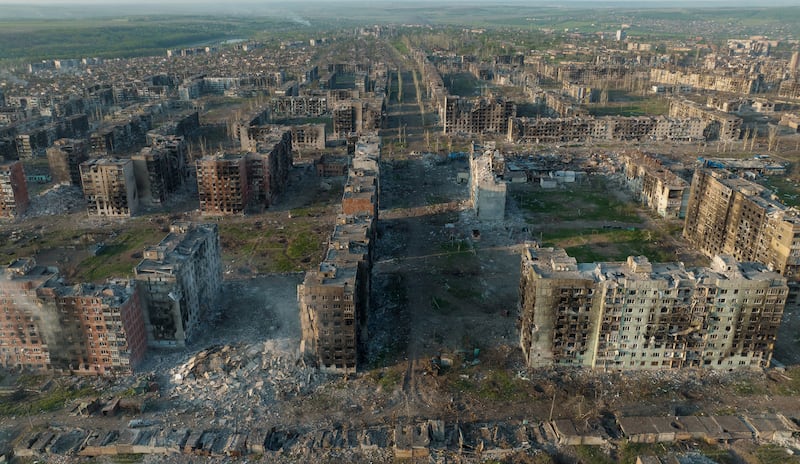Ukraine has said it shot down dozens of explosive drones and conducted a prisoner swap to bring home 106 soldiers who fought for the eastern city of Bakhmut, where the Wagner mercenary group said it was handing over positions to the regular Russian army.
Kyiv said all 36 Iranian-made Shahed drones launched by Russia were intercepted in the early hours of Thursday, shortly after Ukrainian president Volodymyr Zelenskiy appealed to the people of Iran to stop their country supplying the weapons to Moscow.
“A simple question: why do you want to be accomplices in Russian terror? Why are you on the side of the evil state? The world sees what is happening, and all of you in Iran see it. Support for evil cannot be denied,” he said.
“Russia is hitting everything indiscriminately. With artillery and mortars, missiles and drones - with what it has and what Russia is given on your behalf. I am sure you must be on the other side of history…Your Shaheds, which terrorise Ukraine every night, only mean that the people of Iran are being pushed deeper and deeper into the dark side of history.”
READ MORE
[ ‘Pyrrhic victory’: Russia claims Bakhmut, but at what cost?Opens in new window ]
Mr Zelenskiy’s chief of staff, Andriy Yermak, said 106 Ukrainian soldiers were returning home after the latest in a series of prisoner exchanges with Russia. Moscow did not immediately announce how many of its troops had been freed in the deal.
“They fought for Bakhmut and performed a feat that prevented the enemy from advancing further into our east. Each of them is a hero of our country. Among those who are being returned from captivity, there are many who were considered missing in action. The relatives of these people went through a difficult period,” Mr Yermak said.
Yevgeny Prigozhin, head of the Wagner group that has led Russia’s bloody bid to take Bakhmut, said last Saturday that his fighters had fully captured the city and revealed that about 20,000 of its members had died in months of fighting.
Kyiv insists that the ruined town is still contested, and says its troops hold one part of Bakhmut and aim to advance along the flanks and encircle its Russian occupiers.
“We are withdrawing the units from Bakhmut. From today…until June 1st, most of the units will rebase to camps in the rear. We are handing our positions to the military,” Mr Prigozhin announced on Thursday – the day he initially said the handover would be complete.
Russian defence minister Sergei Shoigu and Belarusian counterpart Viktor Khrenin signed a pact allowing Moscow to deploy tactical nuclear missiles on its ally’s territory, formalising an announcement made by the Kremlin in March.

“In the context of an extremely sharp escalation of threats on the western borders of Russia and Belarus, a decision was made to take countermeasures in the military-nuclear sphere,” Mr Shoigu said.
“Russia is not transferring nuclear weapons to Belarus: control over them and the decision to use them remains with the Russian side,” he added of the tactical nuclear weapons, which have a shorter range and smaller payload than strategic missiles.
Scrutiny of Mr Shoigu and Moscow’s military intensified this week, when Russian anti-Kremlin guerrillas fighting for Ukraine crossed into Russia’s Belgorod region and claimed to have control of at least two villages for about a day.
Members of one of the groups involved – the Russian Volunteer Corps – said on Thursday they were inside Russia again and published a video filmed outside the post office in the village of Glotovo in Belgorod region. It was not clear when the footage was taken.













